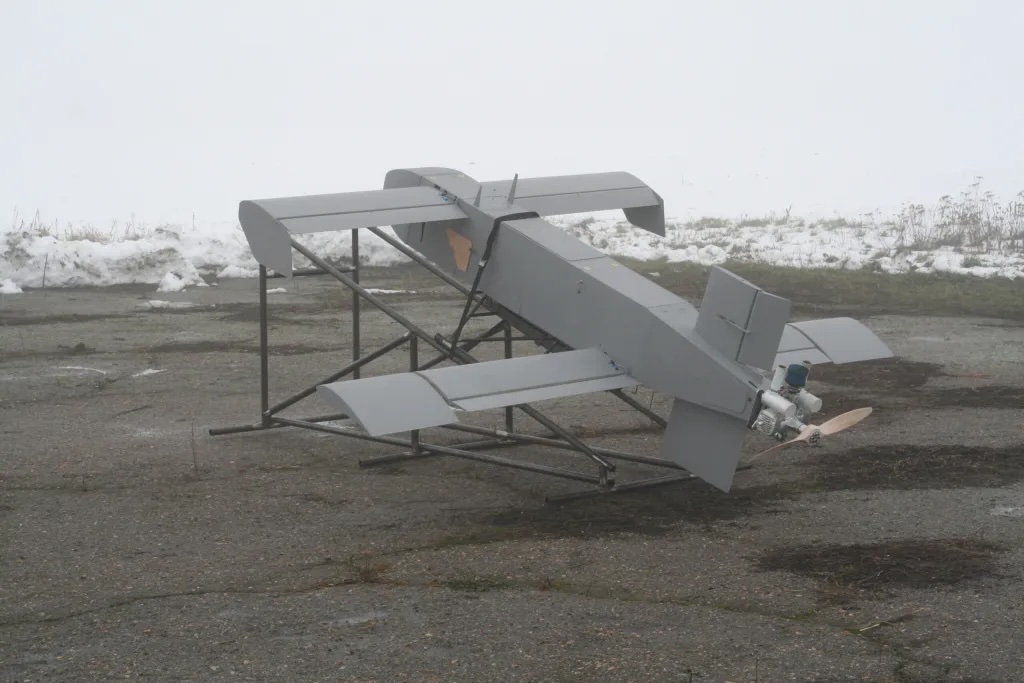
Ukraine has launched drone attacks of oil refineries deep inside Russia as part of an effort to undermine the nation’s energy sector – and thereby undercut the finances of its ongoing invasion – in a strategy initially revealed to DroneDJ late last year.
Ukraine unleashed a series of ongoing drone strikes against the oil treatment installations on Tuesday, with reports saying up to four have been hit thus far. Sources in the country tell DroneDJ as many as ten may have actually been struck, though media accounts thus far cite lower numbers.
The assaults were credited with forcing most, if not all of affected refineries to halt activity as officials battle resulting fires and assess the considerable damage inflicted. According to local media reports, three of those energy installations account for 12% of Russia’s total refining capacity.
While that may not seem like a decisive percentage, it still represents a valuable chunk of the $10.4 billion in monthly oil export revenues Russia has relied on to finance its invasion of Ukraine. Meanwhile, obtaining parts to repair the damage from the drone strikes will take longer and be more difficult under continued global sanctions on Russia.
Ukraine has made both its capabilities and determination to take Russia’s war deep back into its own territory evident for a year now, notably with drone attacks in and around Moscow itself. But the targeting of energy installations is part of a strategy initially revealed to DroneDJ in December by Ukraine-based startup Terminal Autonomy.
Maker of the long-range AQ 400 Scythe UAVs, Terminal Autonomy had shifted its focus on producing first-person drones for Ukraine’s defense to aircraft capable of fulfilling the country’s plans to strike Russia’s oil production financing strength, said company CEO Francisco Serra-Martins .
“Terminal Autonomy’s decision to shift to long-range loitering munitions is strategically designed to break the back of Russian industry and energy networks, and to overwhelm the Russian war machine,” Serra-Martins explained in an email to DroneDJ in December. “These munitions serve as a deliberate means to disrupt vital sectors of their supply chain, creating substantial disruptions that undermine their operational capabilities. This calculated approach aims to significantly weaken critical components of their economy and military.”
Those large, energy-targeted operations were finally launched this week, with Scythes among the aerial assets deployed. It’s possible up to 10 refineries inside Russia may have been hit.
According to specialist publication Energy Intelligence, Ukraine’s drone strikes may have even more disrupting consequences for Moscow beyond reduced export revenues – especially if the campaign continues knocking oil facilities offline.
“Russia has already frozen gasoline exports and could be forced to enact measures to ensure domestic diesel supplies,” it reported, noting a pair of installations damages are of particular importance. “The two refineries are a critical source of transportation fuels for the Moscow market, and their prolonged outage will create tremendous problems for supply security.”
As DroneDJ noted in its December story:
Eschewing the usual startup hi-tech luxuries of 3D printers and even supplies of fiberglass that are rare to nonexistent in war-torn Ukraine, Terminal Autonomy makes the drone’s body from plywood reserves, and uses landing gear that look like they were taken off the neighbor’s wheelbarrow. AQ 400 Scythe are assembled from designs that don’t require the highly skilled hands of engineers – vastly facilitating production.
Navigation and visualization tech is a mixture of sensors and communication systems that – while operationally effective and largely resistant to jamming – only raise the UAV’s final cost to a reported $30,000. As such, those comparatively inexpensive AQ 400 Scythe drones represent Ukraine’s long-in-coming answer to Russia’s Iran-supplied Shaheed loitering munitions – and then some.
Capable of traveling up to 900 kilometers with lighter payload and engine options, Terminal Autonomy’s attack drone is matching its Iranian counterpart with cruising speeds of 140 kph and maximum velocity of 200 kph. Once thrust aloft by rocket launchers, catapults, or on their own power like airplanes, AQ400 Scythes can fly at altitudes up to 10,000 feet, requiring Russian forces to use expensive munitions in order to reach (and, possibly, strike) the far less expensive craft. Even those hit, Serra-Martins notes, will have forced Russia to use far costlier and limited munitions reserves.
FTC: We use income earning auto affiliate links. More.


Comments